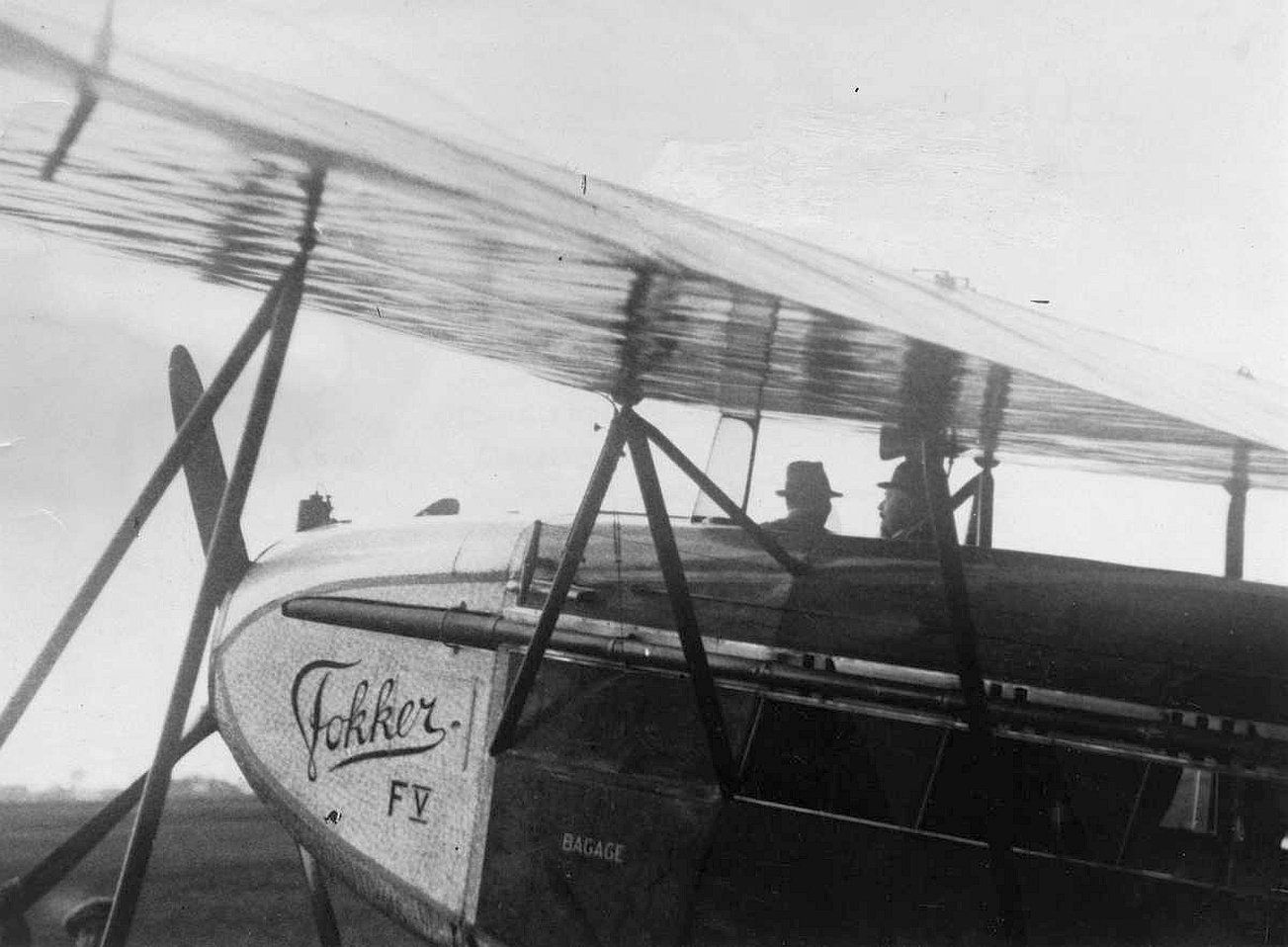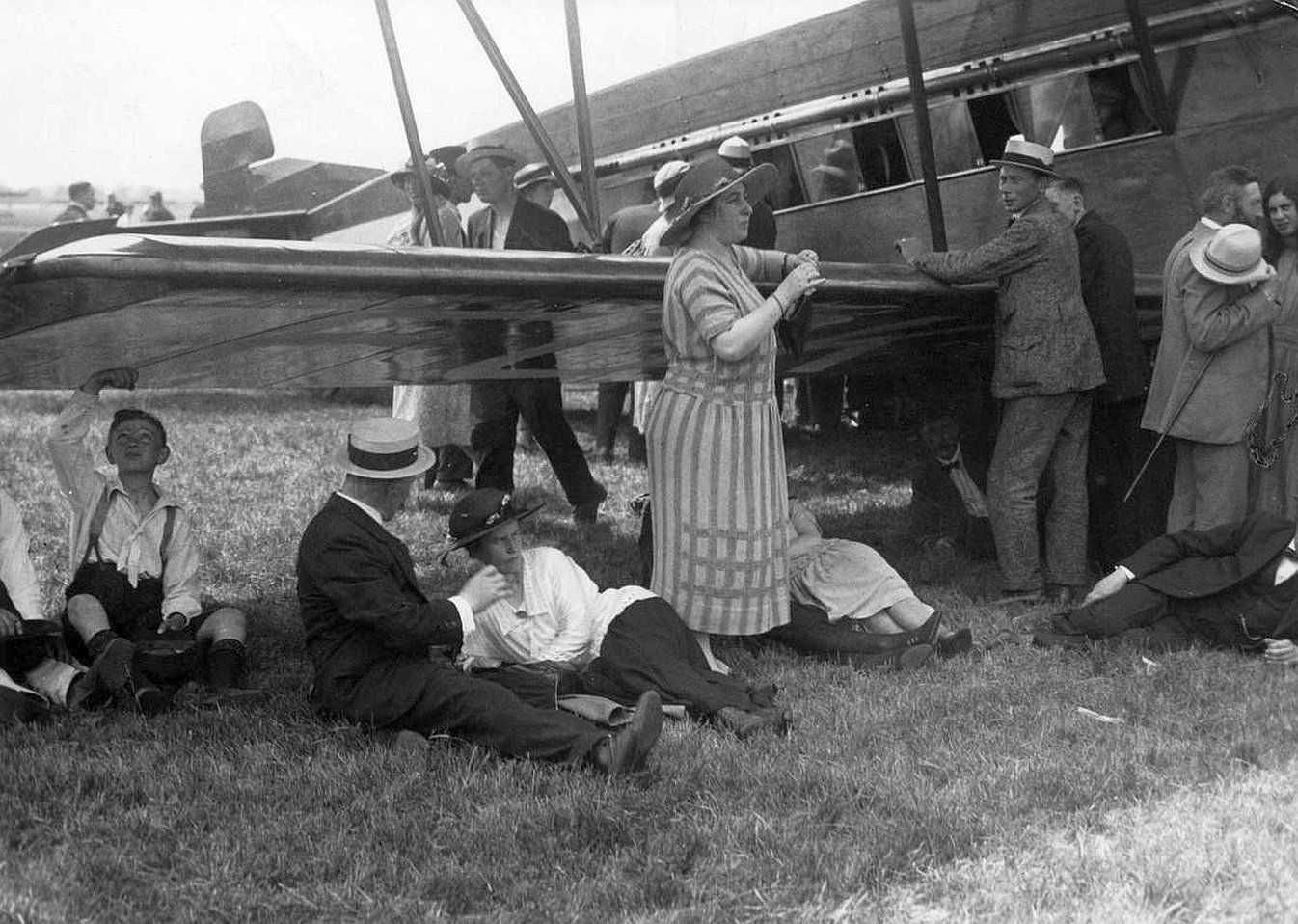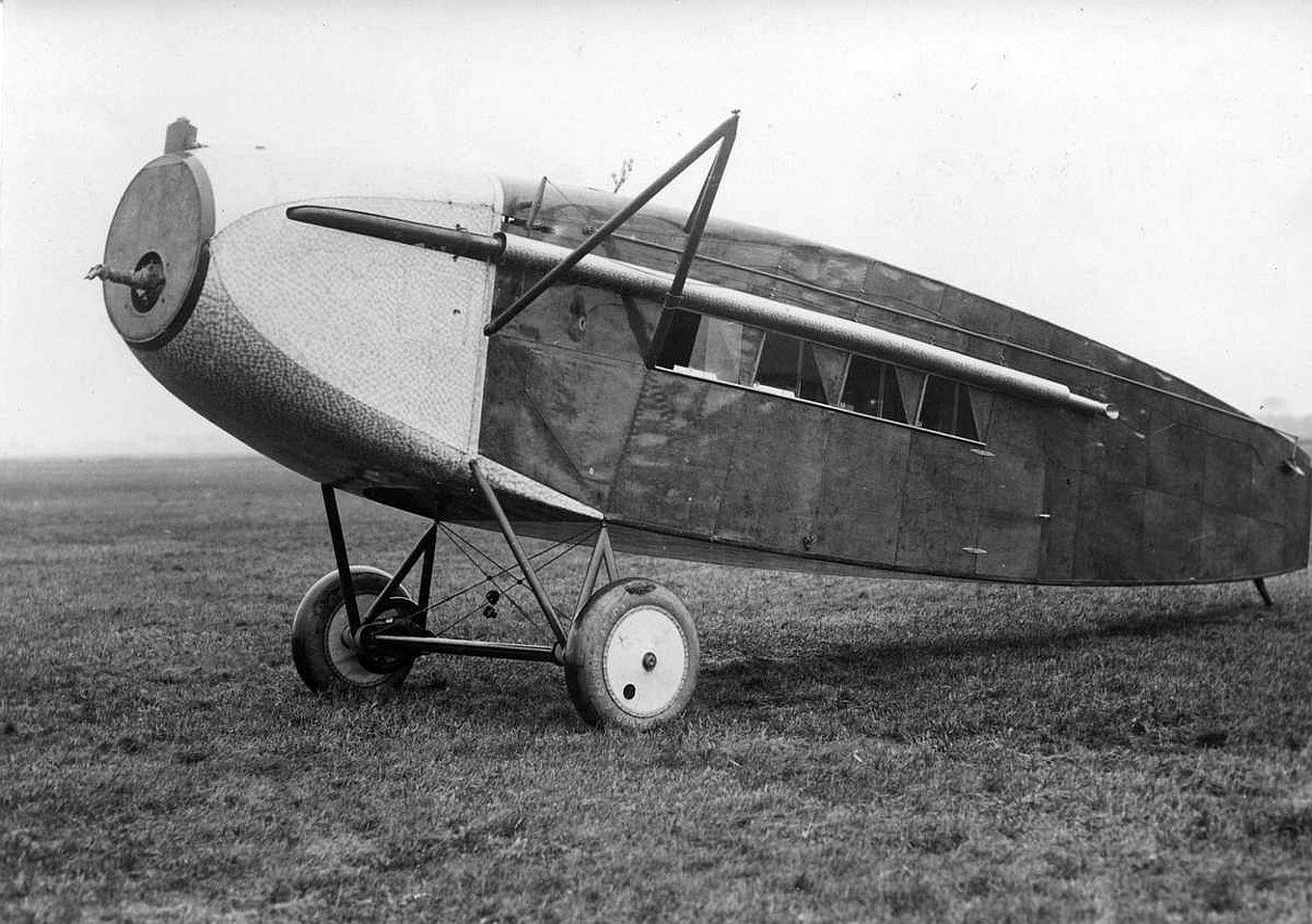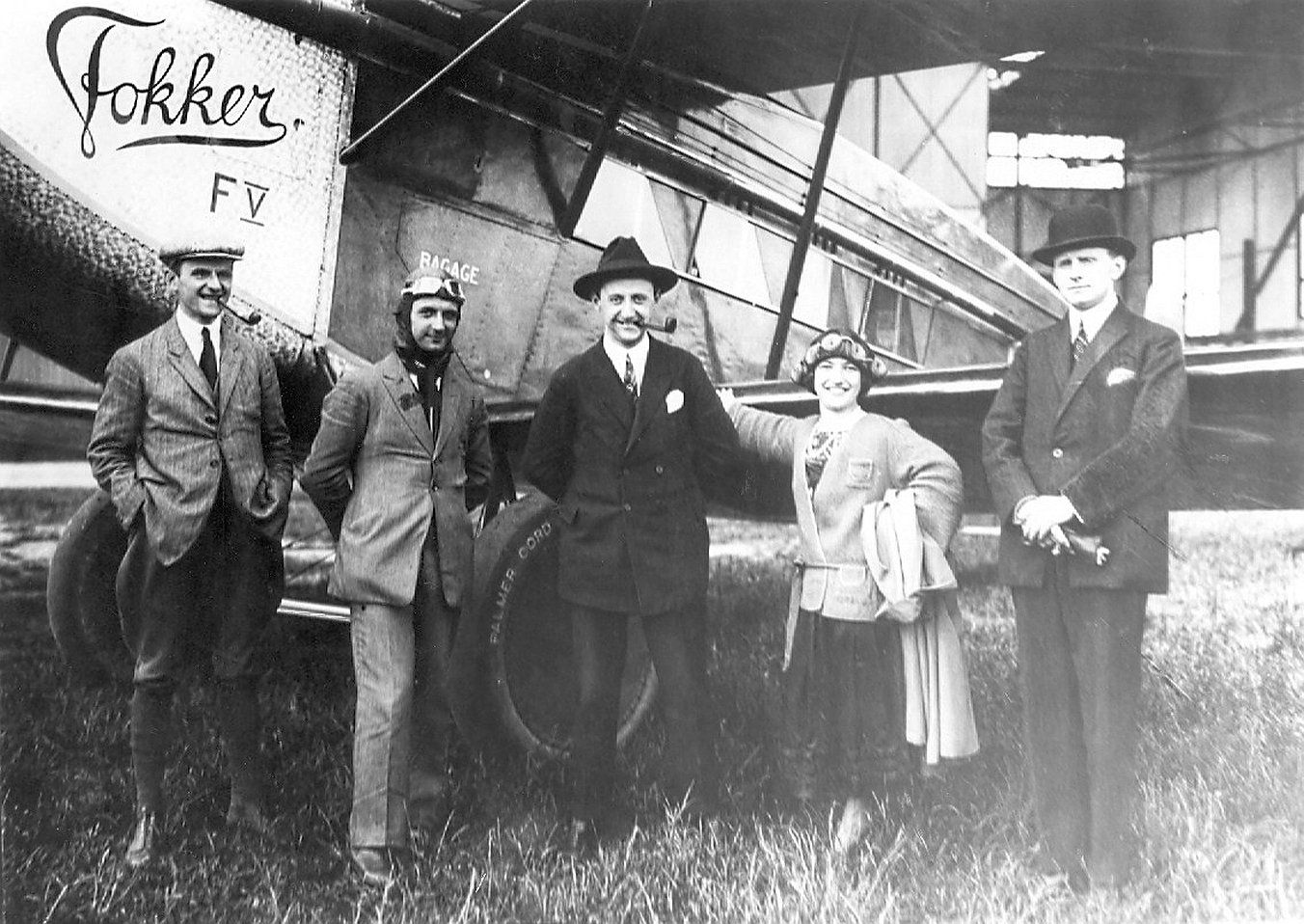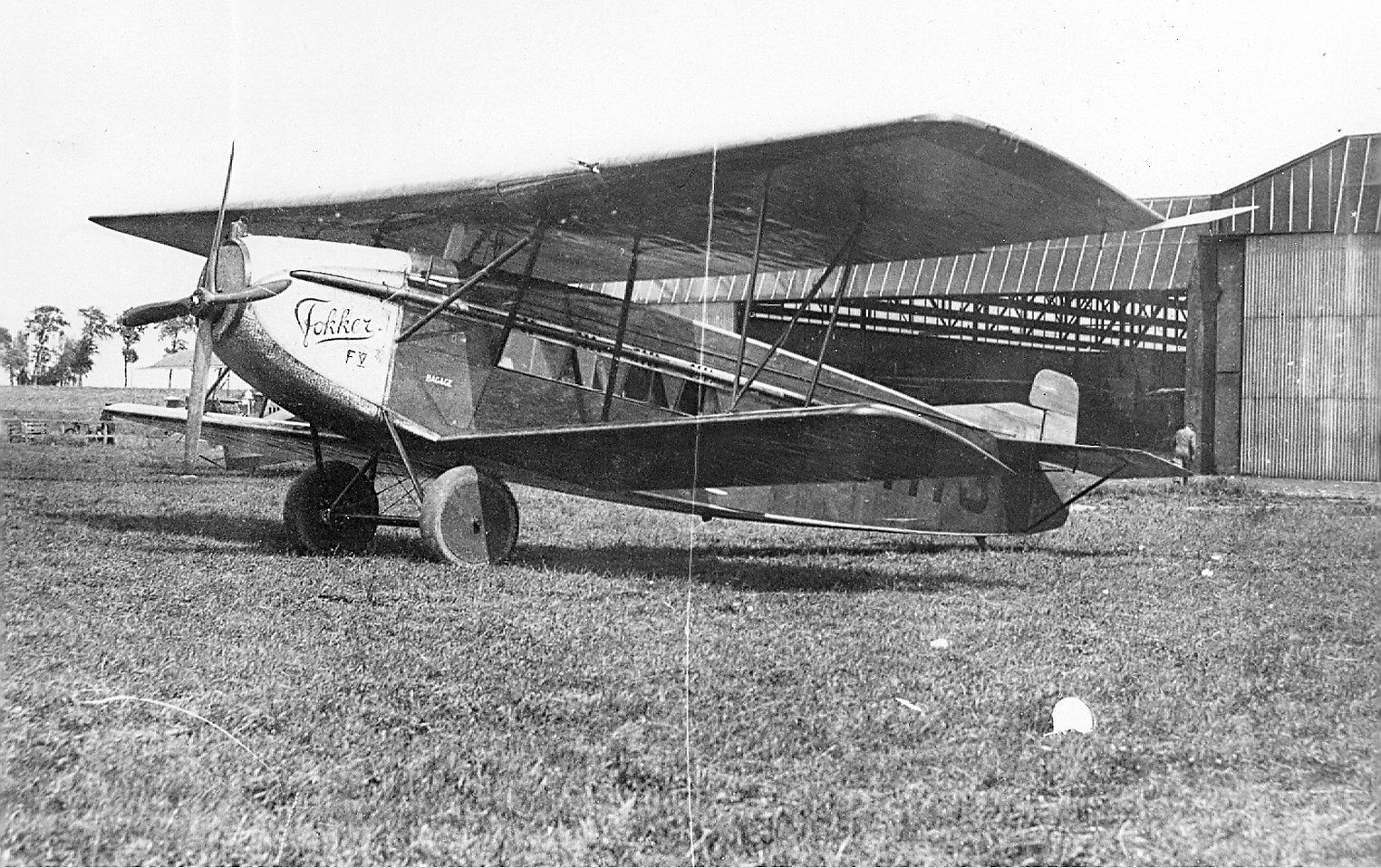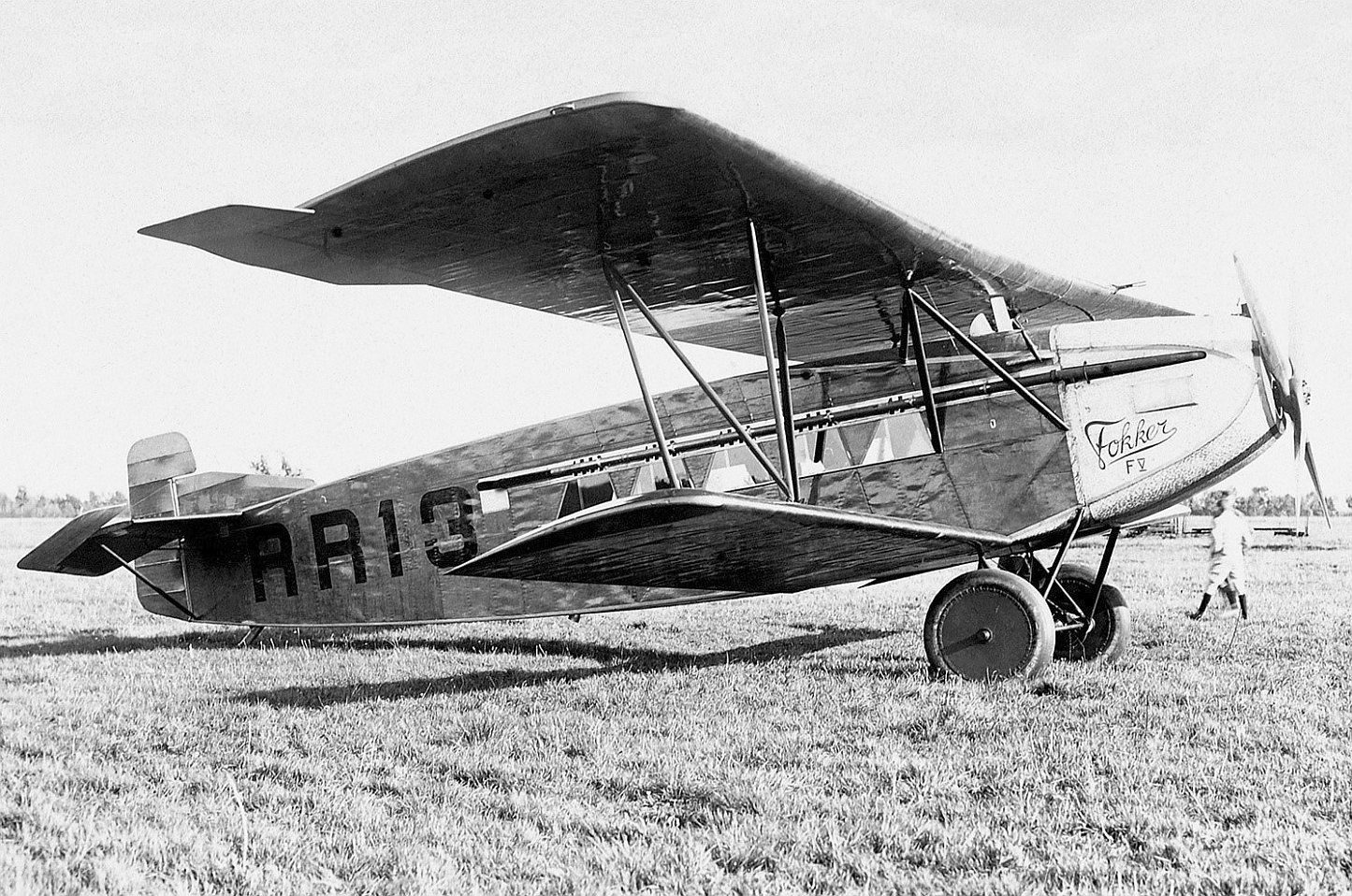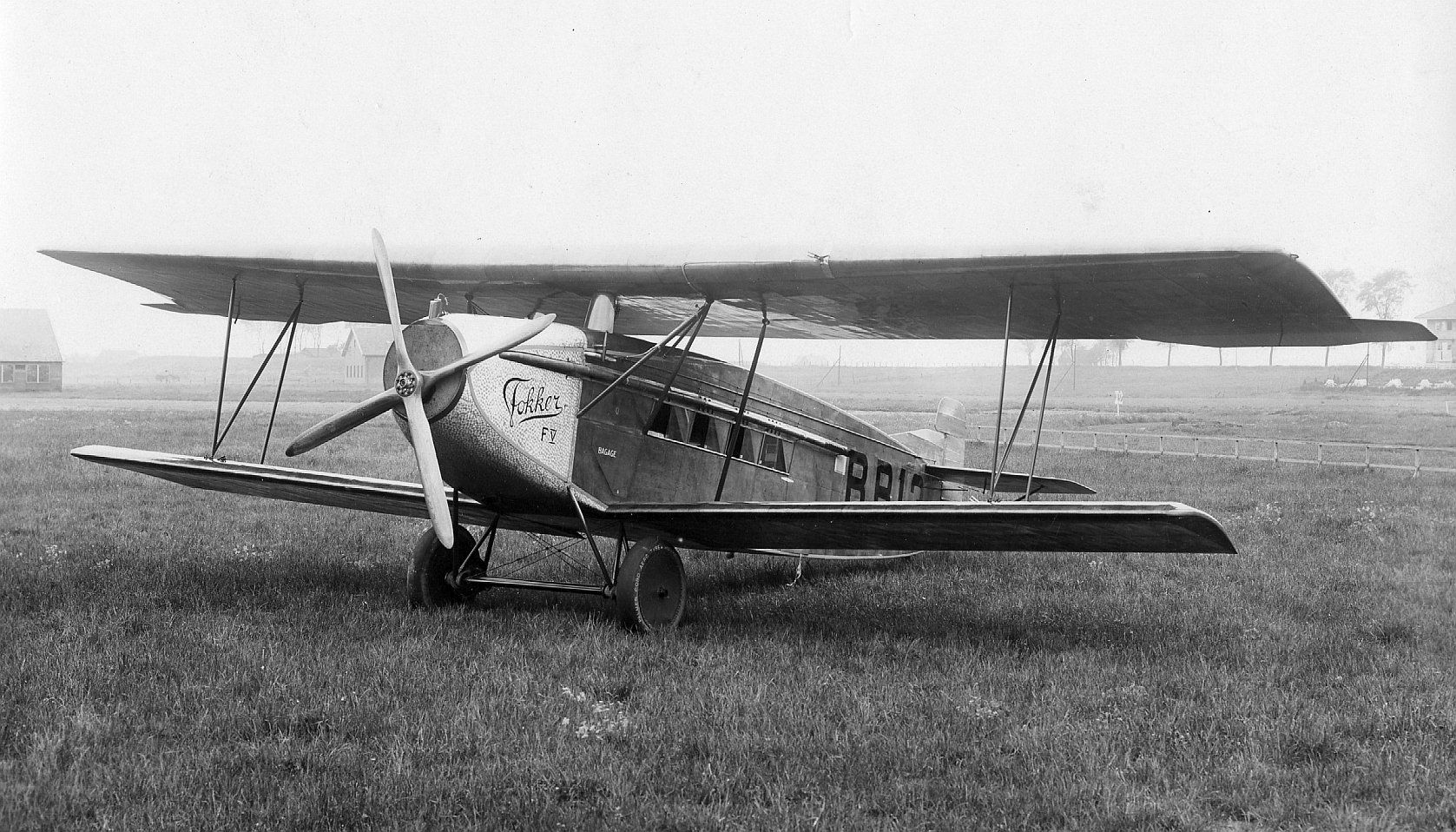Fokker F.V
There was no immediate known reason why Reinhold Platz designed the F.V in 1922.
The F.V, built in Veere, could be designed as a single winged aircraft (monoplane) or a biplane.
The lower wing was hinged and could be quickly removed or installed.
The lower wing could be attached to the upper wing by means of N-struts.
The upper wing was fixed mounted in a parasol version.
When flying with a single wing, the aircraft had less drag, making it faster.
Flying as a bi-plane gave a slower speed, but the aircraft could be loaded more heavily.
The power source was the 360 hp Rolls Royce Eagle water-cooled V-12 engine.
Test pilot Herman Hess made the first flight at Schiphol on December 7th , 1922.
The aircraft was equipped with a number of innovations compared to its predecessors the F.II and the F.III.
The fuselage was not covered with linen, but with thin plywood sheets both on the inside as well as on the outside of the wing.
This was unsuccessful, as the sheets began to vibrate severely while flying
making it very noisy in the cabin.
The 8 passenger cabin had heating and there was a toilet on board.
The aircraft was not a success and KLM was not interested in the F.V. It remained with the construction of one aircraft.
In 1923 the F.V was rented by the German-Russian Deruluft and eventually the F.V was sold in 1924 to an Italian private person.
Click on the photo to enlarge the photo




